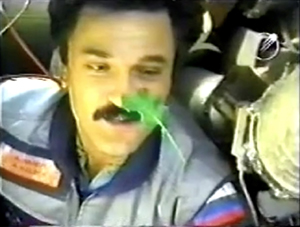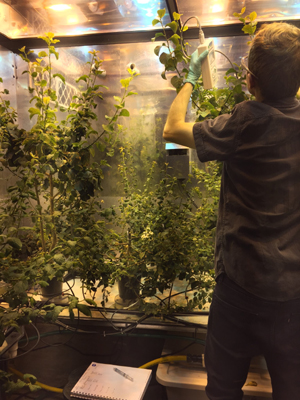Biography :
Of Space Gardens and space gardeners. Towards a cosmicology.
Abstract :
" It was at the begining of my second mission on the ISS and there was a small greenhouse, when these vegetal ecosystems stated to be implemented on the station (..) I remember we were trying to scrounge some extra time at night to look at the window and enjoy all these sensations that did not belong to work - I remember crossing the station at night to enjoy the view, and I came across my collegue Yuri.
He had been on the station for six month and instead of staying at the window and looking at the Earth, he used to hang by the greenhouse - and you could see how much he was attracted and pleased, and how he longed for it. I would have never imagined that ! I mean, that you could be fascinated by those lettuces ! But well, there he was. I used to go and gaze at the Earth and he used to gaze at the growing lettuce. So when you mentioned those relationships we have with non humans, I immediately thought about Yuri watching his lettuce grow at night. " (Interview with a French female astronaut, Paris, 2015)
As they do on Earth, gardens in space provide fresh food and host companion species (as well as more threatening species like microbes and fungi) and, as seminal anthropological works have shown, they are also scenes where natureculture continuity and ontological assumptions are staged. In space their magic lies in their power to give their fellow astronauts a sense (and senses) of their Earth home. Gardens' leafy inhabitants are different from the plants sent up there as pure objects of science as they are mostly open systems, in direct contacts with astronauts who can smell them, eat them, water them and monitor their health. Of course, daily schedules, mission goals, microbes tracking, and the overall tightly controlled environment a space station is, put restrictions on this companionship. Yet, unlike their corporate counterparts on Earth (vertical farming, aeroponic towers, plants-in-computers), their marginal survival and discreet presence are still depending on the subtle care and attention of their fellow human gardeners, on the ground and in space. In the estranged and hostile world a space station is, gardens are fragile, but none of the space gardeners I met envision long missions without those beings rooting their companion humans back home. Echoing the recent awareness of human and more-than-human entanglements, outer space is no exception for the study of planthuman contacts. Many of the space gardeners I interviewed experience plant life as sensitive, unique, fragile and yet robust. It is in the formes-de-vie (Agamben, 2015) flourishing when humans and plants are in contact and in spite of the dense web of systems they are enmeshed with, that I found the resources to start deconstructing the capsule as a self-sufficient, future-oriented, closed-loop simulacre and notice how cosmicology (cosmos-oriented ecology) could also take place there. My research on "artificial" ecologies in space has materialized a world where there is no stable and inert world lying under us. The loop is entirely composed of "people," (Danowski & Castro, 2014) Humans and Earth others alike, (Plumwood, 2002), whose slightest actions can significantly alter the whole stuff this world is made of - each one sharing the responsibility of sustaining the existence of all the others, each one being a gardener for the other.
That finding should also advocate against metaphors of the spaceship Earth where humans are the ultimate pilots and gardeners. It also tries to dismantle the idea of Space as a vacuum open to conquest and think of cosmic entities connected to the web of lives on Earth (Benjamin, 1978), thus engaging critically with western science and technological infrastructures.
Agamben, Giorgio. L'Usage des corps. Homo sacer IV 2. Paris: Le Seuil, 2015.
Benjamin, Walter. " Vers le planetarium " in Sens unique. Paris: Maurice Nadeau, 1978.
Danowski, Deborah & Viveiros de Castro, Eduardo (2015) " L'arrêt de monde " in Hache, Emilie, ed. (2015), De l'univers Clos Au Monde Infini. Editions Dehors.
Descola, Philippe. La nature domestique: Symbolisme et praxis dans l'écologie des Achuar. Les Editions de la MSH, 2015.
Myers Natasha (2017) " From the Anthropocene to the Planthroposcene: Designing Gardens for Plant/People Involution ", History and Anthropology.
Olson, Valerie A. (2018), Into the Extreme, Minnapolis : University of Minnesota Press.
Plumwood, Val (2002), Feminism and the Mastery of Nature. 1st edition. Routledge.
Povinelli, Elizabeth A. (2016), Geontologies. Durham N.C.: Duke University Press.
 | |  |
| Ground control of the VEGGIE facility, Kennedy Space Center February 2017, Photo by the author | | Capture of Alexander Kaleri on Mir station during the harvest of salad crops in the SVET greenhouse, April 2000, courtesy of IBMP and Nasa Kennedy Space Center |
|
 |
| Sean, space gardener at KSC, February 2017, Photo by the author |
|









